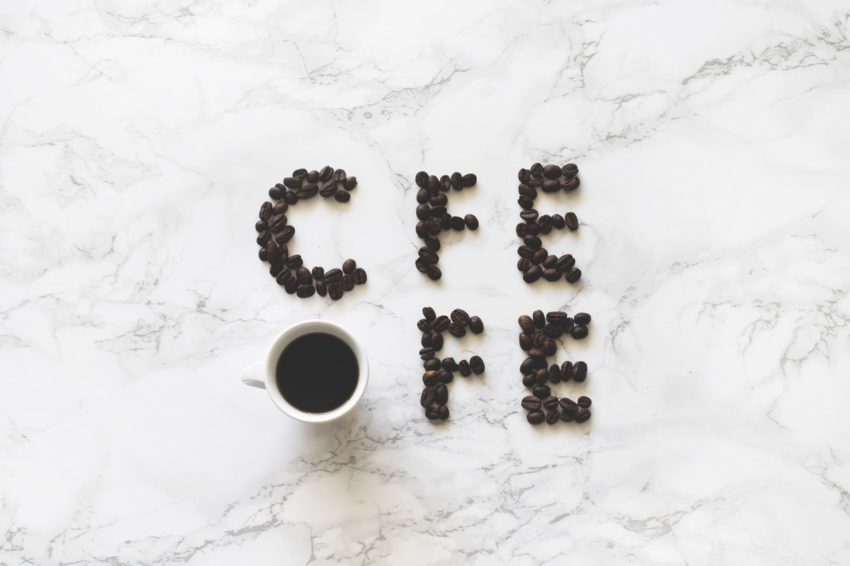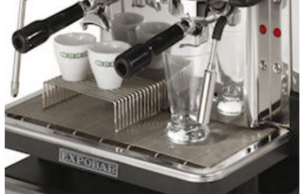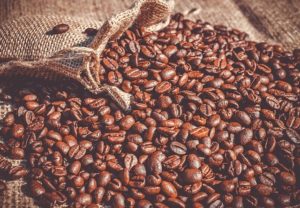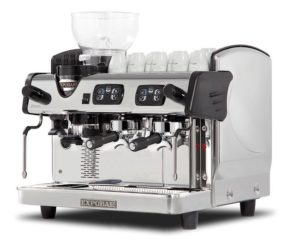
With the highest proportion of coffee shops in Europe, it is very clear that the UK is not just a nation of tea-drinkers. British consumers are becoming ever more knowledgeable about what makes a good cup of coffee – with many beginning to expect the highest standards of every cup they buy.
The days when a cup of instant would go down a treat are coming to an end. Coffee-making has become an art-form and the espresso, the basic component of nearly every kind of specialist coffee, is the foundation of that art-form. Get it right, and you won’t go far wrong.
Let’s look a little closer at how you can become an expert of the espresso – and impress your clued-up clientele.
First things first
Invest in Your Equipment
Start off right. Without a good coffee machine, you won’t be getting the best out of your coffee beans – however good they happen to be.
The type of machine you’ll want will depend on the type of food business you run and the number of cups of coffee you will be making per day.
Coffee and espresso machines have become a standard part of our day-to-day lives however have been on the scene for a lot longer than you think. Espresso machines have been around since 1884, when steam pressure was first harnessed by Angelo Moriondo to speed up brewing times. Since those early days, two main types of espresso machine have evolved: there’s the traditional espresso machine and there’s the bean-to-cup machine. The essential difference between these types of machine are the level of automation, and the level of control over the final cup they give you.
If you’re a coffee connoisseur, eager to bring your customers a bespoke brew, you’ll be looking for a traditional machine. Most of these are semi-automatic, giving you manual control over many of the variables which go into making the cup of coffee: you’ve got to grind the beans, spoon out your dose, and pack (or tamp) the coffee into the portafilter before slotting the portafilter into the machine; you then set the water pressure and the extraction time – then if you are making a specialist coffee, you’ll also need to foam the milk.

If you want to seem like a coffee connoisseur but don’t want too much control over the process, there are some traditional machines which take on a few more aspects of the process for you, such as the extraction.
For quality and control, go with a traditional machine. For ease of use, however, go with a bean-to-cup.
The humble bean-to-cup machine automates nearly everything. You just put the beans in the top and make sure you don’t spill any of the liquid as it streams out at the bottom. Simple.
Decide between the two types: while restaurants and increasingly pubs with well-trained staff typically favour the traditional machines, smaller food businesses usually go for the quick and easy bean-to-cup.
Once that decisions out of the way, estimate how many cups you will be making per day and, of course, weigh this against your budget. Look for the most well-made machine your money can buy.
Then, begin to build your coffee…
From the grounds up
Know where your beans come from. While it can be cheaper and easier to buy packs of coffee beans which don’t tell you their life story, going for a pack which tells you where the beans were grown can ensure you get quality coffee time after time with the added bonus of giving you an adjective to add to your menu – not just coffee, Ecuadorian coffee.
As you get more familiar with the different tastes of coffees from different regions, this knowledge can help you build a better brew – whether that’s chocolatey Costa Rican beans or beans from Asia with an earthy taste.

Then, know your roasts.
- A light roast means more of the natural flavours of the beans come through – whether that’s tart fruitiness or the unique flavours produced by the region.
- If you want those unique regional flavours to truly shine, however, you’ll need to go medium – though be warned that one person’s medium can be another’s light and another’s dark.
- Finally, a dark roast is good for those who love a bittersweet taste – you will still get a hint of the original flavours of the bean, but you’ll get much less sweetness and a little more bitterness. Dark is perfect for those who take it black.
When you’ve chosen your beans: make sure you are buying the right grind. If you’re using an espresso machine, you’ll need to go for a Super Fine. You will likely want to buy a pack of pre-ground coffee beans but, if you’re especially eager, you may wish to invest in a burr grinder and get started on those whole beans.
Find a full range of coffee grinders here.
With the beans in the bag,
Get the Ratios Right
There are two ratios to think about when making an espresso.
First, there’s the coffee to water ratio.
To find your ideal, start by making your first cup: put 170ml of water and 10g of coffee into the machine. Taste the cup that this ratio produces and then play around with the amounts – adjusting the strength of the coffee and the taste – until you find the perfect ratio for you.
One ideal is for the cup of coffee at the end to weigh twice as much as the coffee grounds you put into the machine – but this is just a starting point, and finding your own idea of perfection may give your restaurant’s coffee a great USP. 
Once you’ve experimented with that ratio, you can move onto the second. The ratio of crema (the sweet light brown layer on top of the espresso) to the body (the middle layer of the cup) to the heart (the bitterest layer of espresso, which sits at the bottom of the cup).
Playing around with this ratio creates some subtle differences in the flavour of the espresso. Adjust the strength of the heart by reducing or increasing the amount of grounds you put into the machine or adjust the amount of crema by reducing or increasing the amount of time you hold the cup under the spout. Most baristas aim for the crema on top of the espresso to be one tenth of the total espresso – but, again, feel free to play around with this.
Perfect the art of making your own espressos and then take this art to your customers.
Remember that…
Coffee Can be Complex
But don’t be daunted. The UK has fallen in love with the humble Cup of Joe and your customers are craving a good cup of coffee – investing in a quality espresso machine and learning to use it well is a simple case of capitalising on their new taste. Begin today.



